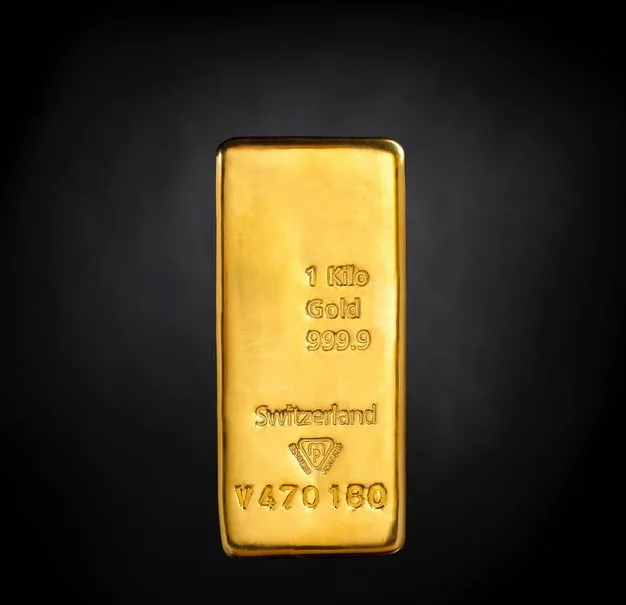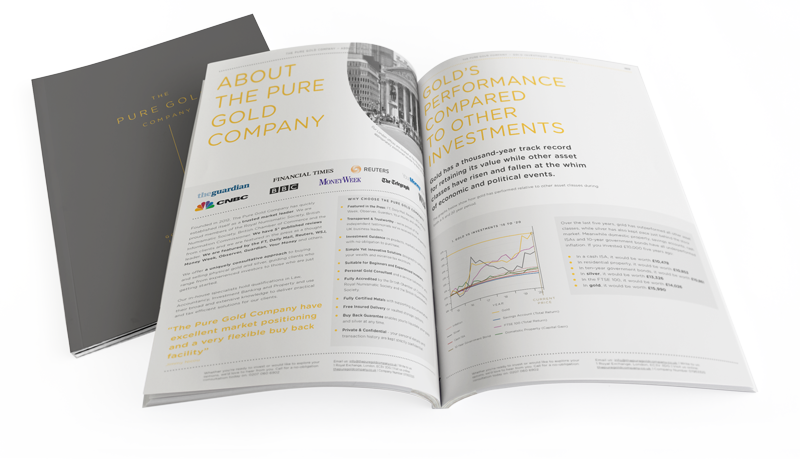Newton said it best – “what goes up must come down”, and the law doesn’t just apply to gravity, it’s equally relevant to markets. While over decades and centuries, stock markets tend to rise incrementally, within this upward cycle there are inevitably periods of decline. History is pockmarked with crashes, slumps and contractions that have wrought havoc with investments.
Of course, no one knows exactly when a market is going to come down, but the signs are often there, in plain hindsight. And when there are signs of trouble, investors look for safe havens to minimise risk. And the safest haven for hundreds of years has been physical gold.
Safe harbour in a financial storm
Gold has a venerable history as a store of wealth. It has been used for thousands of years as a currency because of its rarity and elemental stability. It doesn’t tarnish, is relatively easy to melt to produce coins or other tradeable currency, and is rare enough to have an intrinsic value placed on it by centuries of civilizations. The precious metal has maintained its value even as currencies and assets have fluctuated.
Gold’s relationship with other investments like stocks, government bonds and property tends to be an inverse one, where a slide in the former prompts a surge in the latter. The correlation isn’t always absolute, because many things affect the price of gold and the volatility of the stock market, but the majority of market declines have seen a flight to safe-haven assets like gold which have maintained or increased in value.
Investment track record
More than once in the years after the 1929 stock market crash and the depths of the great depression, the gold price rose above the value of the dollar, causing many people to redeem paper currency for its value in gold. Even when the balance swung the other way, people continued to hold onto and redeem gold as they saw the precious metal as a safe-haven investment against a devalued dollar and institutional risk. Unable to sustain the redemptions, US President Roosevelt outlawed private ownership of gold, and this was only reversed at the end of 1974.
Years later the 1973/74 oil crisis, which sent energy prices soaring, dragged the S&P 500 down 48% over 21 months. The gold price meanwhile almost tripled from $65 to close to $170 in the same period as investors sought somewhere safe to store their assets amid geopolitical uncertainty and financial decline.
During the flash crash of 1987, when the Dow Jones Industrial Average fell over 22% in one day, the gold market initially jumped as investors piled their investment money out of stocks. The effect didn’t last long that time though, and gold flattened out the next day, but it did start to climb, and by December that year had gained almost 3.5%
Just over a decade later, the bursting of the Dotcom bubble sent the markets on a long downward spiral, falling almost 50% in the months between early 2000 and late 2002. But during that time gold held its own, staving off the slump that besieged overvalued stocks and rising more than 10% in the period.
The most recent financial crisis, which started with a bear market in 2007 and continued for two years, knocked 56% off the S&P 500 index, while the housing market also crashed on both sides of the Atlantic. But the gold price rose by a quarter in that time, and continued to rise for three more years as recession uncertainty and the fallout of the global financial crisis sent many investors looking for the safe-haven asset.
Why Buy Gold In 2024?
Discover how physical gold investment compares to other investment assets for growth and protection.

Investment parity
Until 20 years ago, gold attracted value-added tax in the same way as other goods and services did, but this changed in 2000 when the UK government harmonised the tax treatment of physical gold with the rest of the EU. This was a recognition of the precious metal as an investment asset on a par with stocks and shares, and gave investors a comparable alternative safe-haven option. The stipulation remains that only investment-grade gold is VAT-exempt. This means the gold must be of a particular type (specific gold bars or bullion coins) and of a minimum standard of purity (at least 22 karats for coins and 24 karats for bars).
Safe-haven assets are relative. For some, the US dollar is a haven against the vagaries of other more volatile economies and currencies because it is the world’s reserve currency and the currency of choice for many business transactions. But it remains exposed to declines from internal and external factors, and many retail investors aren’t adept at playing the currency market.
Safe-haven advantages
The advantages of physical gold enhance its safe-haven status. For one, there is no counter-party risk, of the company or bank going bust. In an actual financial crisis, bank deposits are only protected up to £85,000 in the UK, and a sudden market crash or major banking crisis could cause overstretched institutions to fail.
In addition, certain types of physical gold coins are legal tender for UK residents. This means they don’t attract any capital gains tax when you come to sell them after weathering the economic storm. Gold Sovereigns and Gold Britannias can be held for any length of time and then sold without incurring any capital gains tax, unlike ETFs or stocks.
The right time to buy
Even before the outbreak of the coronavirus, political and economic conditions could justifiably be described as uncertain. But there have never been such drastic and society-changing circumstances before. The global shutdown of commerce, travel, tourism and education has profoundly affected every aspect of life the world over. The trillions of dollars of government aid being pledged will at best only stave off total economic collapse. Markets have plunged, recovered slightly and fallen again, sitting over 20% below their level before the pandemic hit.
There is no longer any question of whether a global recession is coming, but how deep and long it will be.
Unfortunately, even the World Economic Forum predicts that “there is every reason to anticipate that this downturn will be far deeper and longer than that of 2008.” And when a recovery finally comes, the effects of the government aid and its necessary borrowing will be felt for years to come. Stock market volatility, property market declines, decimated pensions and many more years of austerity will make it more difficult for people to grow their investments.
Investing in physical gold has been a safe-haven choice for hundreds of years, and it has proven itself through many of the slumps and recessions over the last century. If ever there was a time to protect your assets, it’s now.


